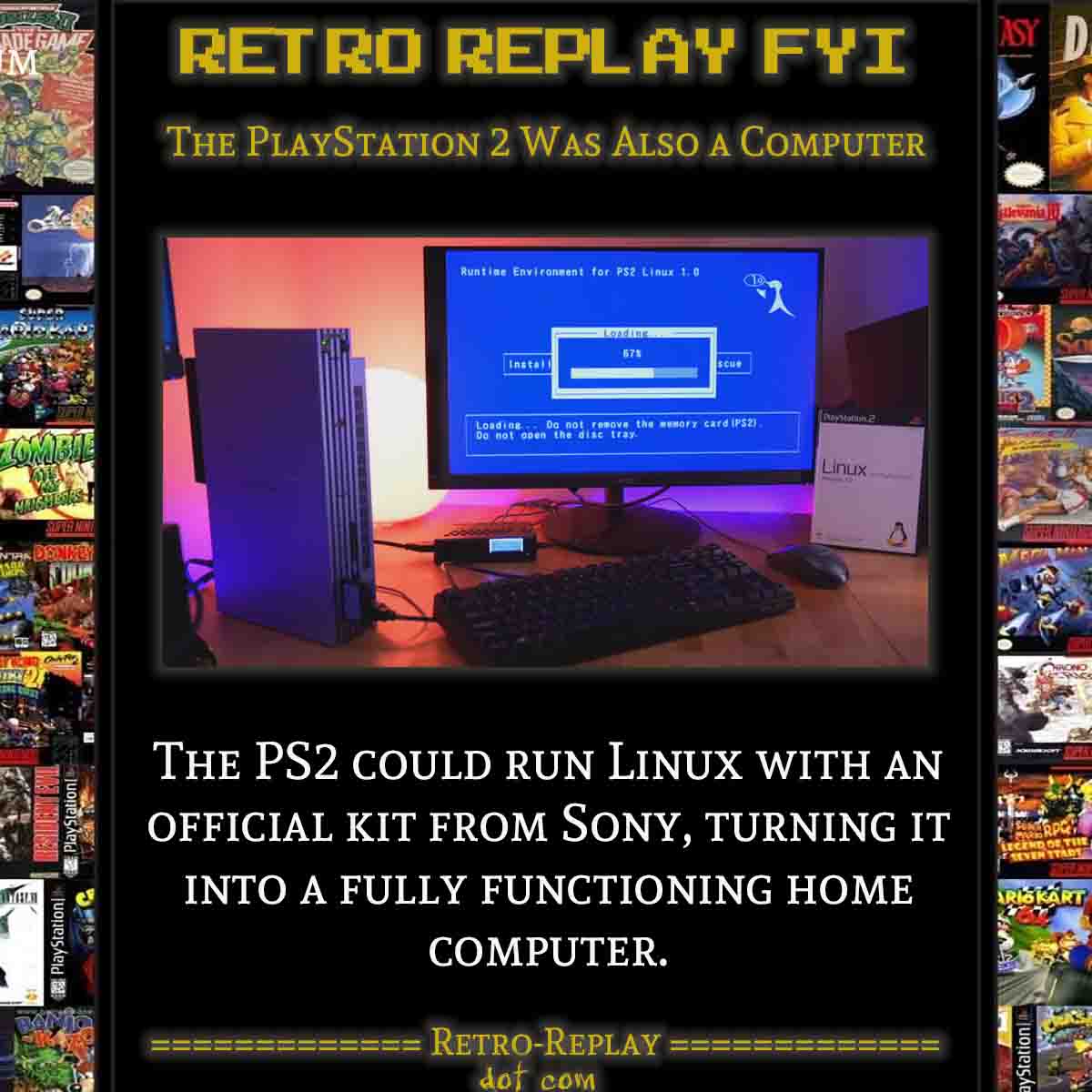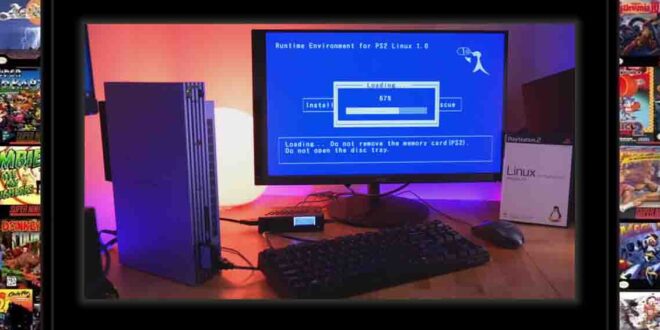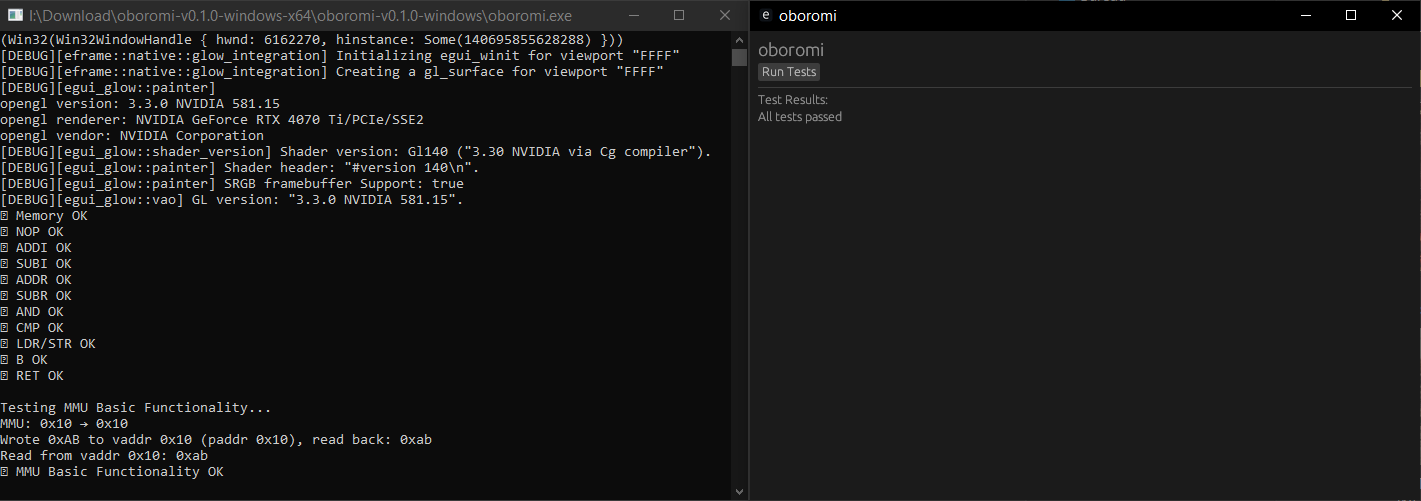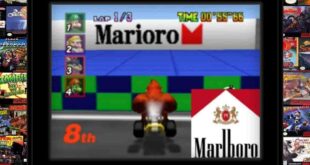The PlayStation 2 Also Worked as a PC
When most people think about the PlayStation 2, they remember the massive library of games, the excitement of slipping in a DVD for the first time, and the fact that it went on to become the best-selling console of all time. What fewer people realize is that Sony had an even bigger vision for their machine. In 2002, they released the Linux for PlayStation 2 kit, which transformed the console into a fully functional computer. With the right add-ons, your PS2 could browse the internet, write code, or even serve as a basic workstation — all from the same box that played Final Fantasy X and Grand Theft Auto III.
(HEY YOU!! We hope you enjoy! We try not to run ads. So basically, this is a very expensive hobby running this site. Please consider joining us for updates, forums, and more. Network w/ us to make some cash or friends while retro gaming, and you can win some free retro games for posting. Okay, carry on 👍)
The Linux Kit That Turned a Console into a PC
The PS2 Linux Kit was a bundle that included everything needed to unlock this hidden side of the system. It came with a 40GB hard drive, a network adapter, a USB keyboard and mouse, a VGA adapter for connecting to a monitor, and of course a copy of Linux on DVD. According to Wired, Sony pitched this as a way to give hobbyists an inexpensive entry point into the world of programming and computing. At the time, personal computers were still relatively expensive, so the idea of using a $299 game console as a PC was both radical and appealing.
Once installed, Linux on the PlayStation 2 functioned like any other Linux distribution of the era. Users could run graphical interfaces, browse the web, edit text files, and even experiment with development tools. As Wikipedia’s entry on Linux for PS2 explains, this was particularly attractive for young coders and students who wanted hands-on experience with Linux but couldn’t afford a separate computer. The PS2’s hardware wasn’t cutting-edge by PC standards, but it was powerful enough to handle basic applications and provided a unique learning environment.
The most exciting part for some users was that the Linux kit also opened the door for homebrew game development. Developers could tinker with the PS2’s hardware at a low level, creating their own games or software projects. For many, it was a chance to learn how to code on a machine they already owned, and for Sony it was a way of positioning the PlayStation 2 as more than just a toy.
Why the Linux Experiment Faded
Despite the buzz, the Linux kit never became mainstream. One reason was its limited availability. According to Sony’s own press release, only a small number of units were released worldwide. While demand was high among enthusiasts, most casual gamers either didn’t know about the kit or weren’t willing to spend extra money for what they saw as a niche experiment.
There were also practical limitations. The PS2 only had 32MB of RAM, which meant that while Linux technically worked, it wasn’t exactly a powerhouse for productivity. To prevent piracy, the Linux environment was locked down — it couldn’t access the PS2’s DVD drive for game backups or multimedia functions. As Vice points out, this frustrated some users who felt the kit was more restrictive than necessary. For many, it felt like Sony had dipped a toe into something groundbreaking but wasn’t fully committed.
By the mid-2000s, the rise of affordable PCs and laptops made the PS2 Linux kit less appealing. Sony eventually discontinued the product, and it faded into obscurity. Yet it remains a fascinating glimpse into an alternate timeline where game consoles and home computers blurred together much more than they do now.

The Legacy of the PS2 Linux Kit
Even though the kit was discontinued, it left behind a loyal fanbase. Enthusiasts kept tinkering, developing homebrew tools and exploits like Free McBoot that let users load custom software and even unofficial versions of Linux on the PS2. The community around it helped keep the console relevant beyond its official lifecycle and contributed to the wider homebrew movement. For some players, this was their very first introduction to coding, and it inspired them to pursue careers in tech.
The PS2 Linux kit also demonstrated something important about how people see their consoles. Sony briefly promoted the PlayStation 2 not just as a gaming machine but as a multi-purpose device that could compete with the personal computer. While that vision didn’t fully pan out, it anticipated the multimedia and all-in-one direction that modern consoles like the PlayStation 5 and Xbox Series X have embraced. In hindsight, the kit was ahead of its time — a bold but imperfect experiment.
Today, boxed copies of the Linux kit are rare collectors’ items, a reminder that the PlayStation 2 was more versatile than most people ever knew. Underneath that black plastic shell was not just a legendary game library, but a whole different way of thinking about what a console could be.
 Retro Replay Retro Replay gaming reviews, news, emulation, geek stuff and more!
Retro Replay Retro Replay gaming reviews, news, emulation, geek stuff and more!




